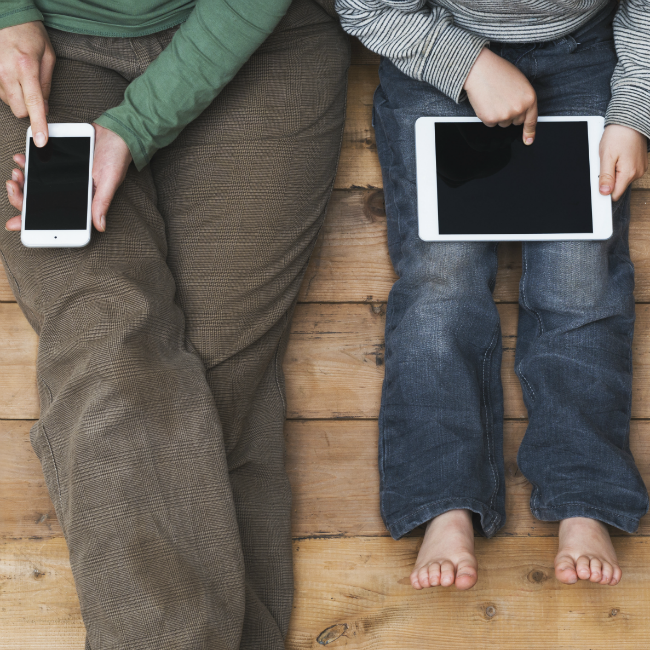For updated information about setting restrictions on iOS 12, please read this support article.
All three of Apple’s portable devices (the iPhone, iPad, and iPod touch) use the same operating system called iOS. So, the steps we’re about to discuss will apply to all three devices, and every iOS device comes with certain fantastic parental controls already built in.
Family Sharing
Apple’s devices come with an amazing tool to help manage app downloads called “Family Sharing.”
To access Family Sharing:
- Click on “Settings,” which is the app that looks like set of gears.
- Next, click “iCloud” and under your name, you’ll see “Set Up Family Sharing.”
- Click on this and follow the instructions for adding family members. This will allow the “organizer” to approve or block app downloads remotely.
How to Set Up iOS Restrictions
Restrictions is an extremely powerful and free feature that helps parents keep their children away from objectionable content and inappropriate apps. But, the set-up is important.
This includes setting restrictions on your kid’s iOS devices and also on your iOS device. It’s so important for parents and caring adults to model online integrity to the young people under their care. Whatever is good for them is probably good for you!
To access Restrictions:
- Click on “Settings,” which is the app that looks like set of gears.
- Click “General” then “Restrictions,” which by default is set to “Off.”
- Click “Enable Restrictions” at the top.
- You’ll then be prompted to create a 4-digit code. Now, don’t forget the code, because the only way to change restrictions without it is by performing a factory reset on the device, which essentially erases anything you’ve downloaded.
As you can see, within Restrictions, a parent can toggle off access to any media as they see fit..
- For example, you can turn off Safari, which is Apple’s internet browser, if you want them to access the internet through another accountable browser, like Covenant Eyes.
- If you keep Safari as an internet browser, be sure to select the “Website” option and then select “Limit Adult Content.” This provides an excellent level of filtering within Safari and also prevents the user from deleting their search history. To access Safari’s search history, open “Safari,” and click the icon that looks like a book, and then select “History”
- Set a “Never Allow” list of websites, and include sites such as Reddit, Tumblr, Imgur, Twitter, Pinterest and certain international search engines like Index (Russia) which allow access to pornography that is not blocked by Safari, even with “Limit Adult Content” enabled.
- Under Restrictions, click “Websites,” “Limit Adult Content,” and then select “Never Allow” to enter in the sites you’d like to restrict.
- For young internet users, you might consider turning off the App store altogether. Although it’s hard to find outright porn in the App store, with over 1.5 million apps and growing, there are plenty of them that offer suggestive and offensive content in the app description that you might want to avoid.
- Further down in Restrictions, you can create age-specific settings for music, books, and Siri.
As you can see, if used correctly, Apple devices have many parental controls to help create a safer Internet experience for your child.








This parental control allows the parent to have control over the iOS. The parent can control and keep a record of the activity occurring ion the device.